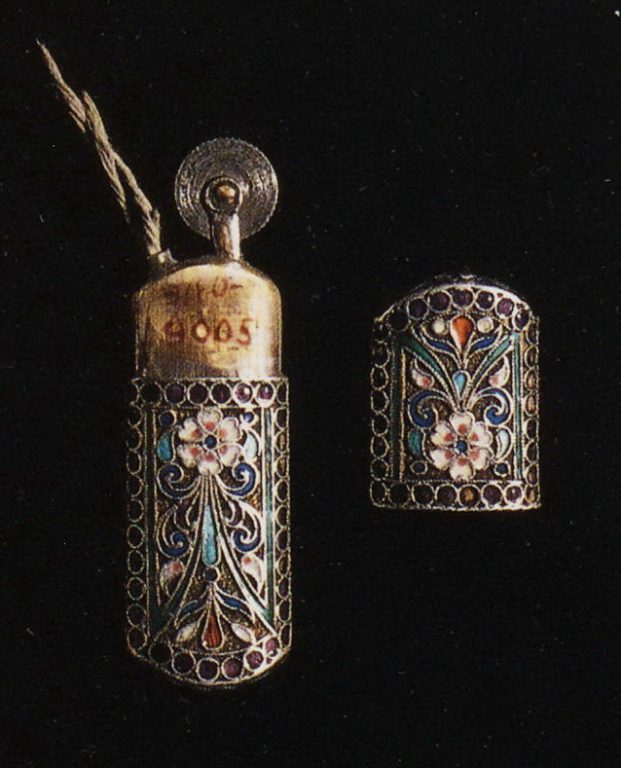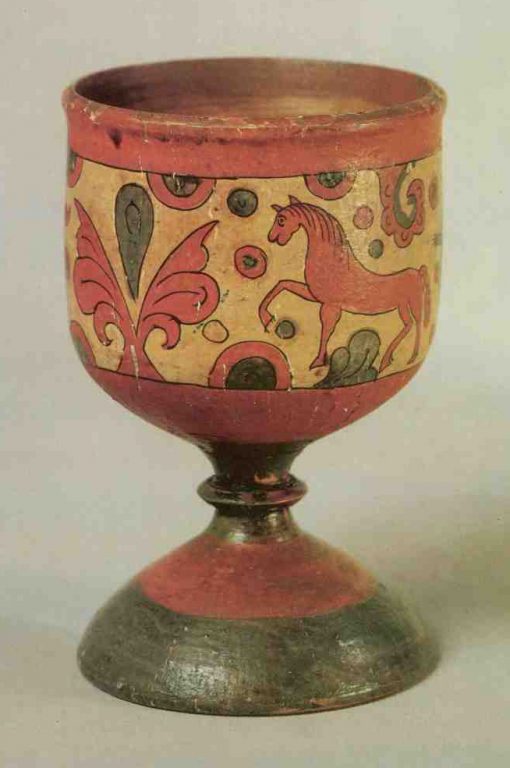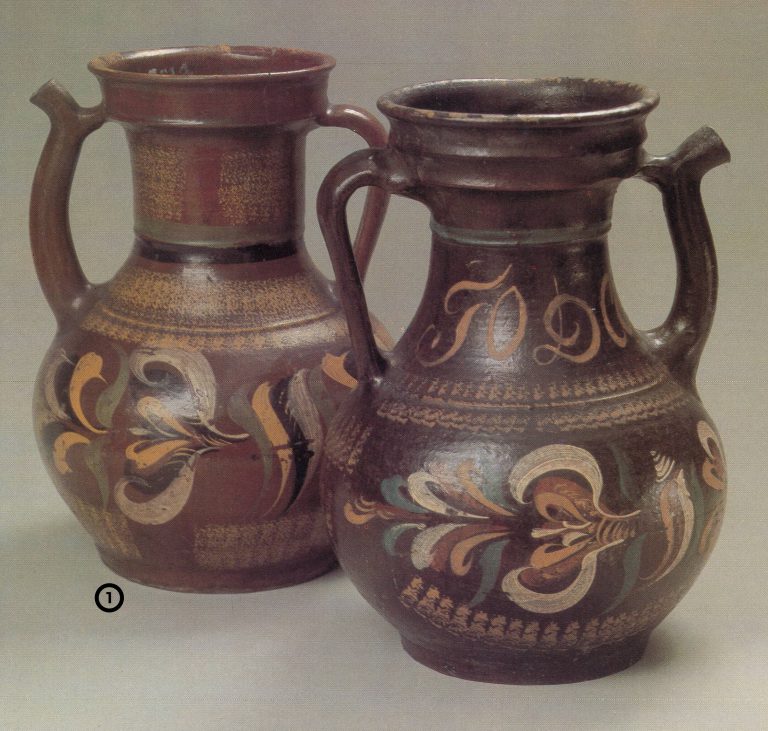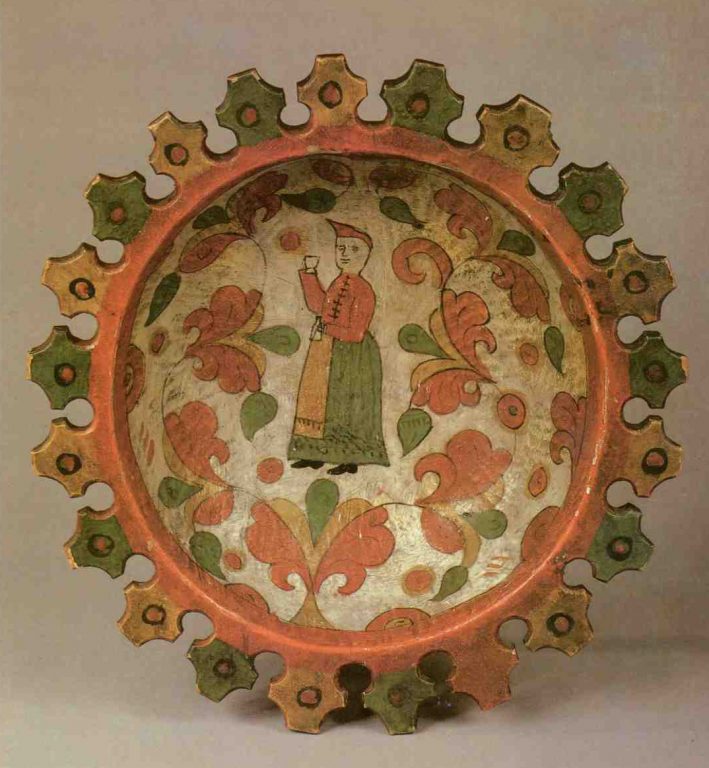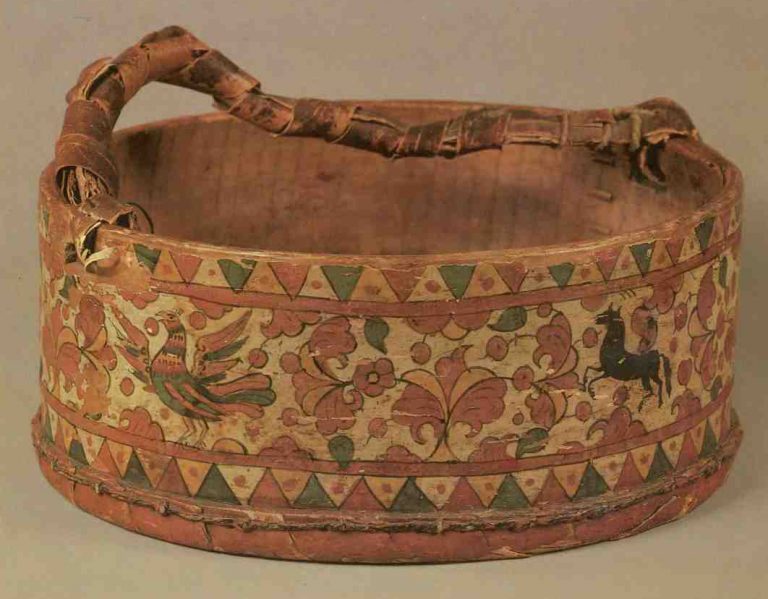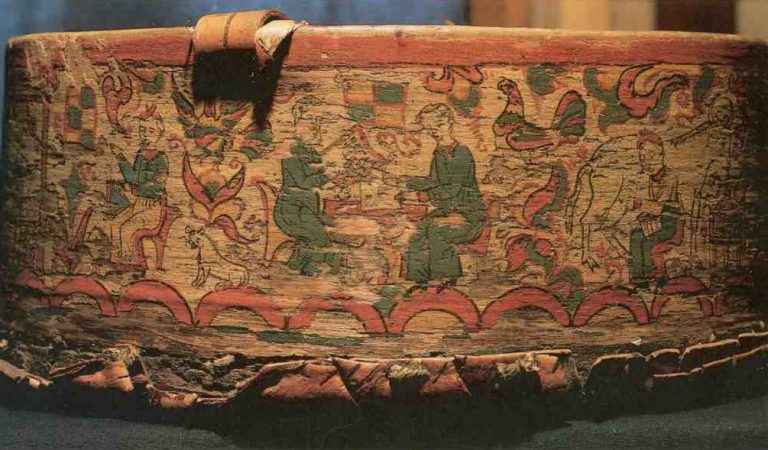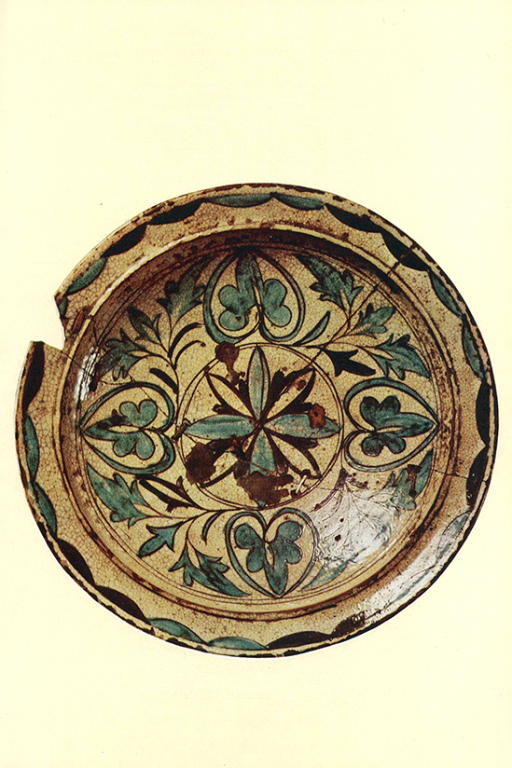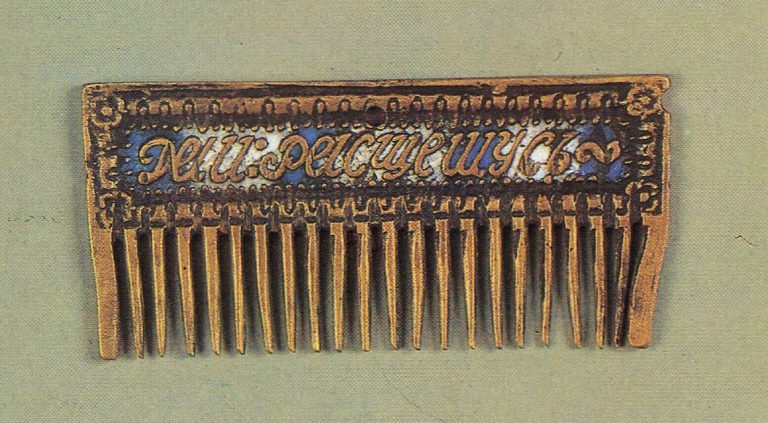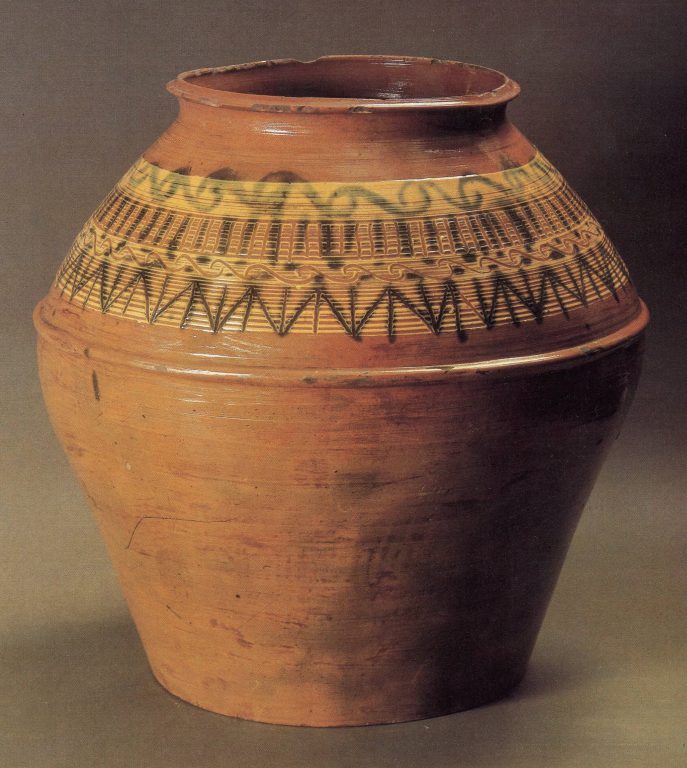
second half 13th century

Iran
Object qualities
-
Objecttableware: Ewer
-
Type of arts & crafts
-
MediumBronze; cast with handle cast separately, chased, engraved, inlaid with silver and gold
-
SizeH. 8 9/16 in. (21.7 cm) W. 6 1/2 in. (16.5 cm) D. 6 in. (15.2 cm) Wt. 40.9 oz. (1159.6 g)
-
Geography detailsAttributed to
Iran -
Country today
-
Datesecond half 13th century
Source of information
-
Type of sourceDatabase “Metropolitan Museum of Art”
-
Fund that the source refers toMetropolitan Museum of Art
Description
-
Anthropomorphic calligraphy, also referred to as human-headed naskh, was unique to metalwork made in Eastern Iran and Mosul, in present-day Iraq, during the twelfth and thirteenth centuries. On this vessel the upright shafts of the letters terminate in heads with facial features. In other examples, the shapes of the letters act as the arms and legs of figures. This short-lived style reflects the ingenuity and playfulness of the artist-designer.



